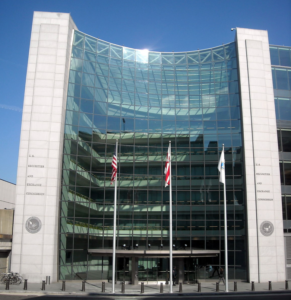© Edm
The rating industry, dominated by the three main auditors – Standard & Poor’s (S&P), Moody’s, Fitch Ratings and KPMG – has come under fire for inconsistencies in its rating methods. As gatekeepers of the financial world, these agencies have an immense impact on global markets as their ratings dictate investment decisions and influence the cost of borrowing.
Despite their importance, these rating agencies face discrepancies in their ratings that sometimes have drastic consequences for investors and markets. The discrepancies can be attributed to several factors, including the agencies’ reliance on subjective assessments, possible conflicts of interest and different methodologies.
One of the most notable cases of inconsistency occurred during the 2008 financial crisis, when mortgage-backed securities were assigned inflated credit ratings that ultimately contributed to the collapse of the market. This catastrophic event highlighted the limitations of credit rating agencies’ methodologies and called into question the reliability of their credit ratings.
Another problem is the potential conflict of interest, as these auditors derive their income from the companies they evaluate. This creates a situation where credit rating agencies (CRAs) may have an incentive to give higher ratings in order to obtain more business, which undermines the objectivity and credibility of their ratings.
Different methodologies among the three major auditors also contribute to discrepancies in credit ratings. Although they all assess credit risk based on similar factors, their procedures and weightings differ, leading to inconsistencies. For example, S&P places more emphasis on quantitative factors, while Moody’s focuses on qualitative aspects and Fitch Ratings takes a more balanced approach.

These inconsistencies can lead to rating shopping, where companies seek the most favourable rating from one of the agencies, further undermining the credibility of the rating system. This practice undermines confidence in the rating process and can contribute to market instability as investors struggle to determine the true creditworthiness of securities.
The ongoing debate about the role and reliability of credit rating agencies has led to calls for reform, with regulators and industry stakeholders pushing for greater transparency and standardisation of methodologies. Initiatives such as the European Union Regulation on Credit Rating Agencies and the Dodd-Frank Wall Street Reform and Consumer Protection Act in the United States are steps in this direction.
But despite these efforts, inconsistencies in ratings remain a pressing problem. Addressing these discrepancies and ensuring that ratings provide an accurate, reliable and unbiased assessment of credit risk is critical for the global financial system to thrive. Only then can investors and market participants make informed decisions that ultimately promote financial stability and growth.

The recent collapses of Silicon Valley Bank and FTX, as well as the subsequent financial problems of First Republic Bank and Credit Suisse, have put the spotlight on the role of US auditors in monitoring the financial health of companies. Auditors are tasked with reviewing companies’ financial records and providing an independent assessment of their financial health. In the case of these two companies, however, auditors failed to spot the warning signs of financial distress.
In the case of Silicon Valley Bank, examiners failed to identify the company’s substantial exposure to the insolvent energy company Greensill Capital. The bank’s heavy dependence on Greensill’s business made it vulnerable to its collapse, which eventually led to the bank’s insolvency.
Similarly, FTX, a cryptocurrency exchange, collapsed due to the lack of oversight by its auditors. The exchange’s auditors failed to identify the exchange’s significant exposure to risky derivatives trading and lack of internal controls.
In the case of First Republican Bank, the Bloomberg tax platform says: “KPMG Gave First Republic a Clean Audit Weeks Before Bailout. KPMG signed off on the institution’s 2022 financial statements on 28 February, but gave no indication that the bank’s survival was at risk.
The Big Four accounting firm declined to comment on the bank’s bailout. KPMG has previously stated that auditors cannot predict “unforeseen events or management actions” that occur after the report to investors”
The errors committed by the auditors in these cases raise questions about the adequacy of their control procedures. Many have criticised auditors for not being vigilant enough in identifying financial risks and for not holding companies accountable for their actions.
This financial mess has also highlighted the need for stronger regulatory oversight of financial institutions. Regulators have been called upon to take a more active role in monitoring the financial health of companies and holding auditors accountable for their mistakes.

The failure of auditors in these cases also shows the importance of transparency in financial reporting. Companies need to be more transparent in disclosing their financial risks and vulnerabilities, and auditors need to be more rigorous in scrutinising their financial records.
During the 2008 financial crisis, US auditors came under fire for their role in the collapse of the subprime mortgage market. Securities backed by subprime mortgages, which were marketed as low-risk investments, turned out to be far riskier than originally thought.
The auditors who were responsible for assessing the risks associated with these securities failed to recognise the warning signs of impending collapse. Many of them had given the subprime mortgage securities a high rating, leading investors to believe that these investments were safe.
The examiners’ ratings were based on faulty assumptions about the stability of the housing market and the ability of borrowers to repay their loans. They did not take into account the impact of rising interest rates, falling property prices or the high number of arrears and defaults.

As a result of these mistakes, investors lost billions of dollars and the global financial system was thrown into chaos. The collapse of the subprime mortgage market led to a wave of foreclosures, bankruptcies and job losses affecting millions of people.
In response to the crisis, regulators introduced a series of measures to improve the transparency and accountability of the accounting industry. They also introduced stricter regulations for the financial sector, including stricter disclosure and reporting requirements.
Despite these reforms, there are still concerns that auditors are not doing enough to identify and address potential financial risks. Critics argue that auditors are too dependent on management and do not always act in the best interests of investors.

In summary, US auditors’ mistakes in valuing the subprime mortgage market were a key factor in the 2008 financial crisis. The collapse of the subprime mortgage market led to significant losses for investors and had a profound impact on the global economy. The crisis highlighted the need for greater transparency and accountability in the accounting industry and led to significant regulatory reforms.
| Watchdogs’ crucial role in navigating banking crisis
The banking crisis has highlighted the crucial role of banking supervisors in maintaining financial stability and avoiding systemic risk in the global financial system.
As regulators and supervisors of financial institutions, banking regulators such as the Federal Reserve and the Financial Conduct Authority are tasked with identifying and mitigating potential risks in the banking sector.
In the midst of a crisis, these regulators are tasked with closely monitoring the health of individual banks and the financial system as a whole, ensuring adequate liquidity and maintaining depositor and investor confidence.
Early detection of irregularities and vulnerabilities is crucial, as banking supervisors can then take corrective action to prevent financial turmoil from escalating.
During a crisis, supervisors must act decisively by enforcing strict prudential standards such as capital requirements and stress tests to ensure that banks have sufficient buffers to absorb losses and continue operations.

An essential part of the role of banking supervisors is to promote transparency and accountability within financial institutions by enforcing strict reporting and disclosure requirements.
In addition to supervising banks, banking supervisors are also responsible for safeguarding consumer interests and ensuring that financial products and services are offered in a fair and transparent manner.
Banking supervisors also have the power to impose sanctions or penalties on financial institutions that fail to comply with prudential regulations, thereby protecting the financial system from misconduct.
Recent events have exposed the failures of these regulators, raising concerns about the safety and stability of the US banking system.
One of the most notable examples of this failure was the Wells Fargo scandal, in which the bank set up millions of fake accounts to achieve its sales goals. Despite warnings from employees and customers, banking regulators did not act until years later, when the damage had already been done.
Other banks were also caught engaging in illegal or unethical behaviour, such as money laundering or discriminatory lending practices. In many cases, regulators were slow to react or imposed weak penalties that did not deter future misconduct.

Another example of regulatory failure is the Madoff scandal involving the largest Ponzi scheme in history. This financial fraud shed light on significant shortcomings in regulatory oversight and the role of financial regulators in detecting and preventing fraud.
Bernard Madoff, a respected figure in the financial world, managed to deceive investors for decades, eventually swindling them out of an estimated $65 billion before his scheme collapsed in 2008. Regulators, including the Securities and Exchange Commission (SEC), were criticised for failing to recognise and respond to the warning signals triggered by Madoff’s investment activities.
Critics argue that the failures of bank regulators are due to a lack of resources, political pressure or a revolving door between regulators and the banks they supervise. Some have called for greater transparency and accountability in the regulatory process, while others have suggested that the government should take a more active role in supervising the banking sector.

In response to the Madoff scandal, financial regulators have since tightened their regulatory frameworks by introducing stricter reporting requirements and increasing transparency in the financial sector.
The Dodd-Frank Wall Street Reform and Consumer Protection Act, passed in 2010, was a direct result of the Madoff scandal. It expanded the regulatory powers of SEC and increased its resources to better detect and prevent financial fraud.
Unfortunately, over the years, other financial scandals and market turmoil have revealed some weaknesses and failures in the implementation of this regulation:
– complexity and cost leading to increased compliance burdens, especially for smaller banks
– inability to fully address the “too big to fail” problem
– limitations of the Volcker Rule
– controversies surrounding the Consumer Financial Protection Bureau
– incomplete implementation of some provisions
– regulatory fragmentation
– insufficient international coordination in addressing global financial risks.
There were discussions and proposals to amend, replace or repeal the legislation. One notable proposal was the Financial CHOICE (Creating Hope and Opportunity for Investors, Consumers, and Entrepreneurs) Act, introduced in 2016 by then-Republican congressman, Jeb Hensarling.

The Financial CHOICE Act aimed to:
1. Replace the Dodd-Frank Act’s “orderly liquidation” with a new bankruptcy process for large financial institutions.
2. Modify the Consumer Financial Protection Bureau (CFPB) by changing its structure, funding and scope of authority.
3. Repeal of the Volcker Rule, which prohibited banks from proprietary trading and certain investment activities.
4. Simplify and adjust financial regulations to reduce the compliance burden on smaller financial institutions.
5. Strengthen penalties for financial fraud and insider trading to increase accountability in the financial industry.
The Financial CHOICE Act was passed by the House of Representatives in 2017 but was not taken up by the Senate. Although there is currently no direct replacement for the Dodd-Frank Act, ongoing discussions on financial regulation and legislative proposals in response to perceived shortcomings and the evolving nature of the financial system are likely to continue.

